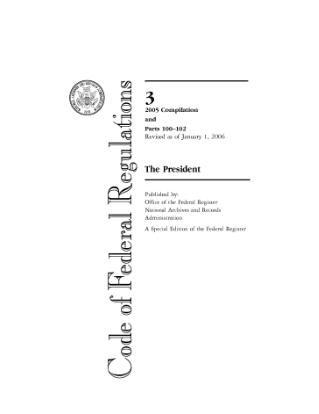
In the law of the United States, the Code of Laws of the United States of America is the official compilation and codification of the general and permanent federal statutes. It contains 53 titles. The main edition is published every six years by the Office of the Law Revision Counsel of the House of Representatives, and cumulative supplements are published annually. The official version of these laws appears in the United States Statutes at Large, a chronological, uncodified compilation.

The United States Census Bureau (USCB), officially the Bureau of the Census, is a principal agency of the U.S. Federal Statistical System, responsible for producing data about the American people and economy. The Census Bureau is part of the U.S. Department of Commerce and its director is appointed by the President of the United States.
A census tract, census area, census district or meshblock is a geographic region defined for the purpose of taking a census. Sometimes these coincide with the limits of cities, towns or other administrative areas and several tracts commonly exist within a county. In unincorporated areas of the United States these are often arbitrary, except for coinciding with political lines.
The United States Government Publishing Office is an agency of the legislative branch of the United States Federal government. The office produces and distributes information products and services for all three branches of the Federal Government, including U.S. passports for the Department of State as well as the official publications of the Supreme Court, the Congress, the Executive Office of the President, executive departments, and independent agencies.

In the law of the United States, the Code of Federal Regulations (CFR) is the codification of the general and permanent regulations promulgated by the executive departments and agencies of the federal government of the United States. The CFR is divided into 50 titles that represent broad areas subject to federal regulation.

The Federal Depository Library Program (FDLP) is a government program created to make U.S. federal government publications available to the public at no cost. As of April 2021, there are 1,114 depository libraries in the United States and its territories. A "government publication" is defined in the U.S. Code as "informational matter which is published as an individual document at Government expense, or as required by law".
Title 28 is the portion of the United States Code that governs the federal judicial system.
Title 1 of the United States Code outlines the general provisions of the United States Code.
Title 11 of the United States Code, also known as the United States Bankruptcy Code, is the source of bankruptcy law in the United States Code.
Title 2 of the United States Code outlines the role of Congress in the United States Code.
Title 3 of the United States Code outlines the role of the President of the United States in the United States Code.
Title 4 of the United States Code outlines the role of flag of the United States, Great Seal of the United States, Washington, DC, and the states in the United States Code.
Title 6 of the United States Code is a non-positive law title of the United States Code that governs Domestic Security.
Title 8 of the United States Code codifies statutes relating to aliens and nationality in the United States Code.
Title 29 of the United States Code is a code that outlines labor regulations in the United States.
Title 44 of the United States Code outlines the role of public printing and documents in the United States Code.
Title 31 of the United States Code outlines the role of the money and finance in the United States Code.
Title 45 of the United States Code outlines the role of rail transport in the United States Code.
Title 47 of the United States Code defines the role and structure of the Federal Communications Commission, an independent agency of the United States government, and the National Telecommunications and Information Administration, part of the United States Department of Commerce. It also criminalizes damage by ships to underwater cables and defines how candidates for political office receive special access to broadcast stations. The Communications Act of 1934, the Communications Assistance for Law Enforcement Act, and the Launching Our Communities' Access to Local (LOCAL) Television Act of 2000 are codified in this title.
Title 48 of the United States Code outlines the role of United States territories and insular areas in the United States Code.




